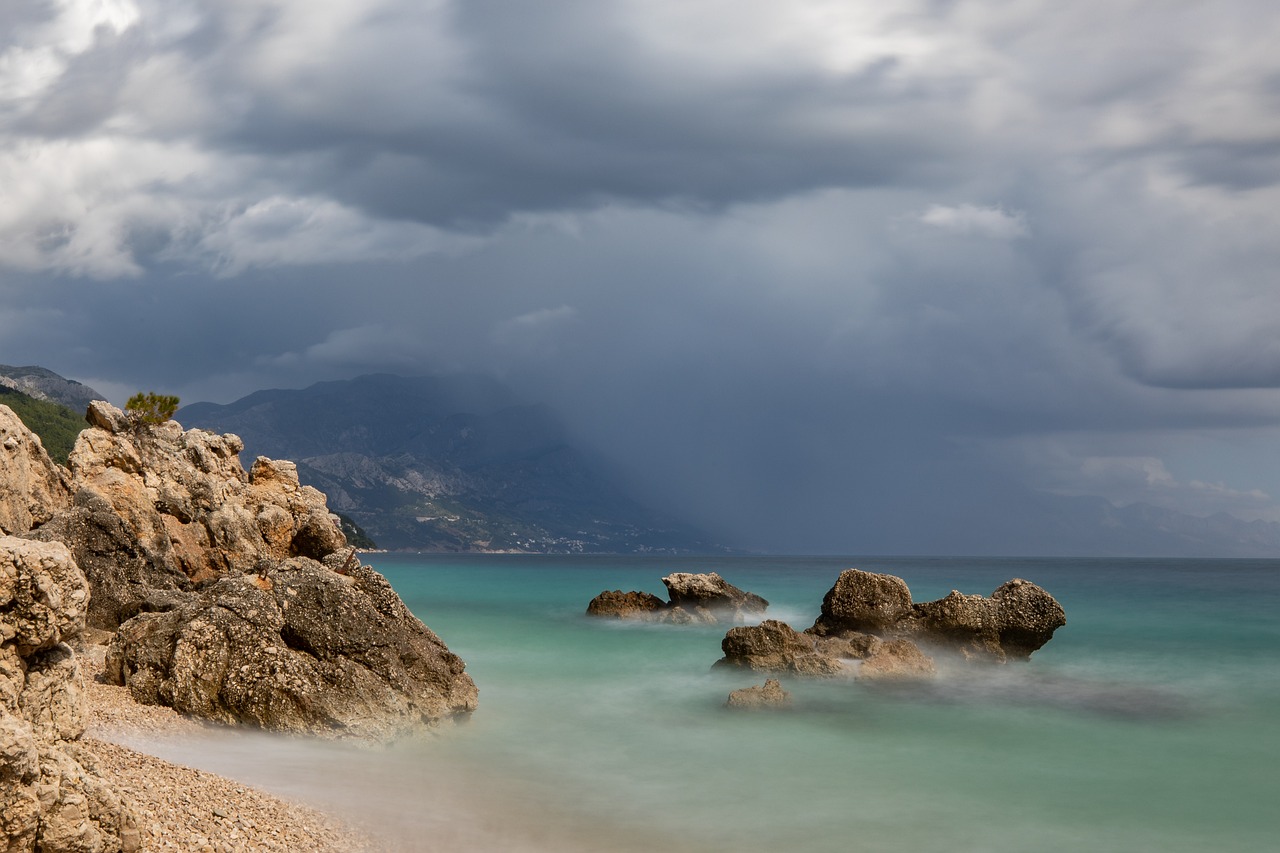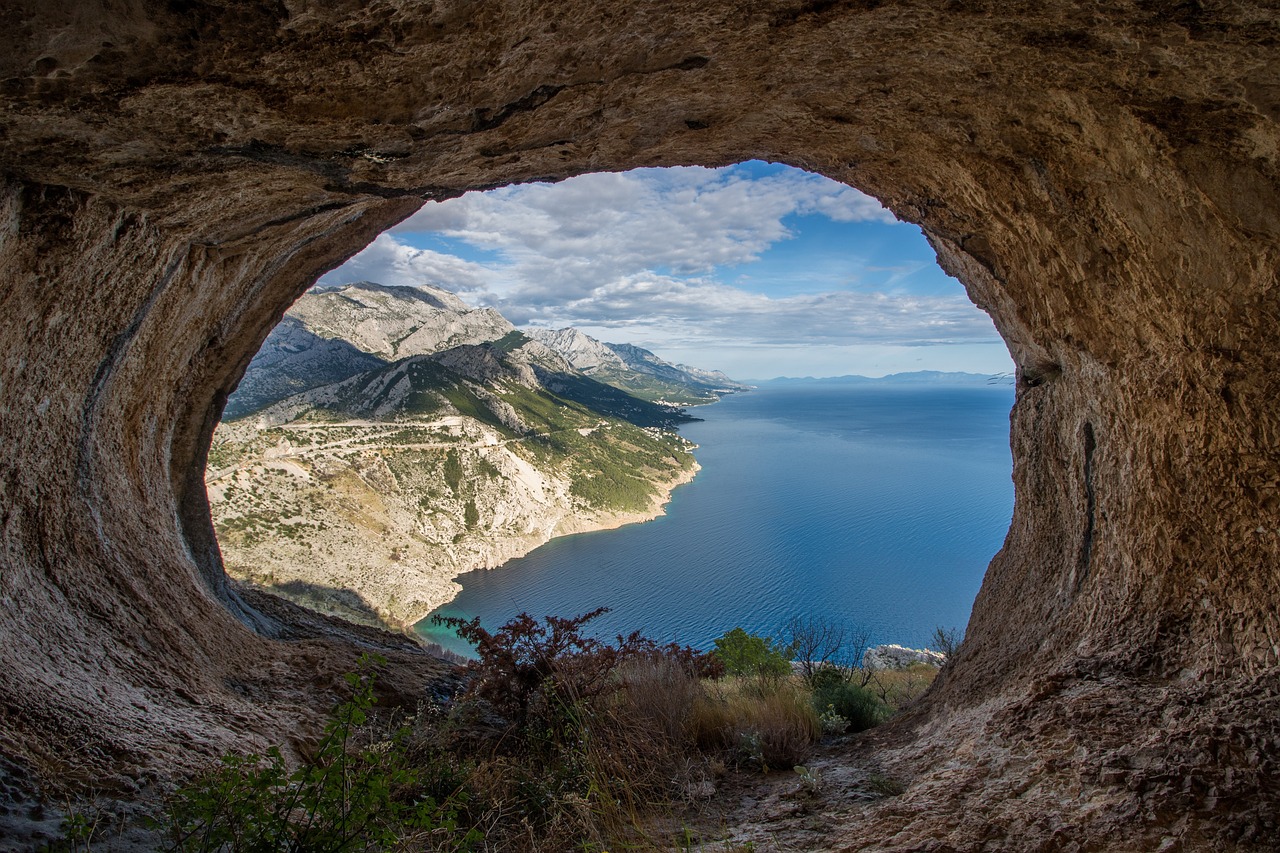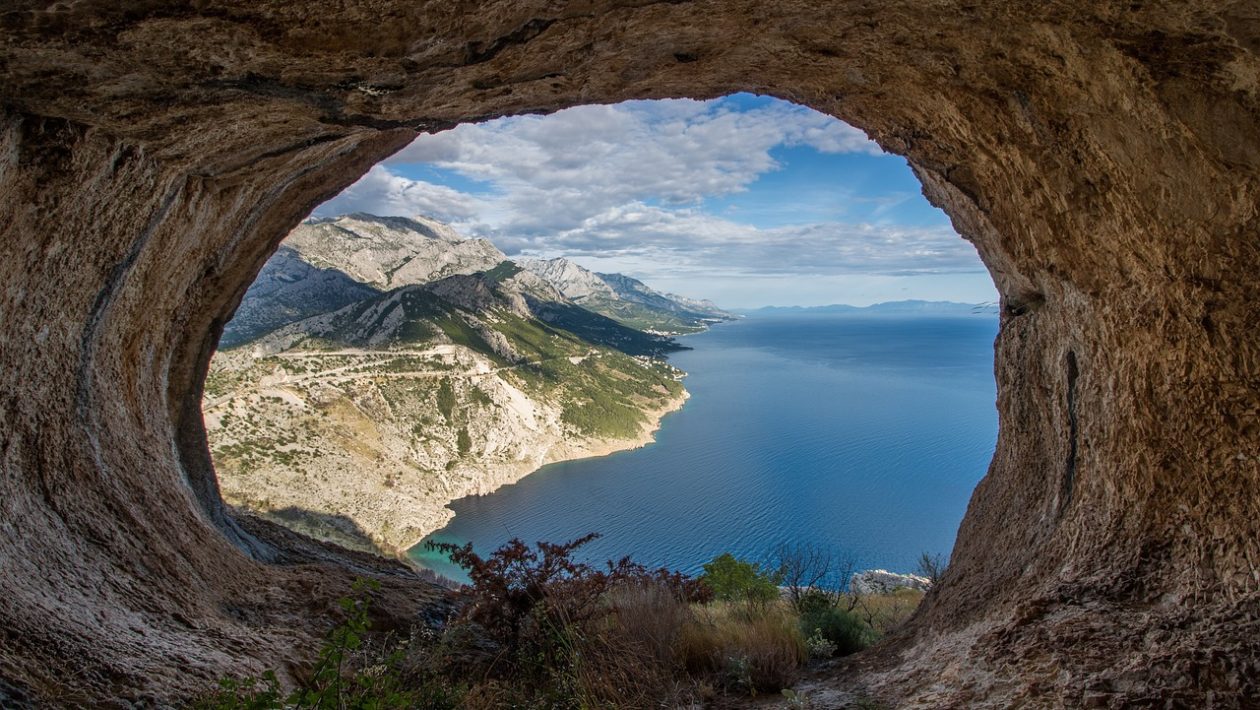The Adriatic Sea, a unique and captivating region, spans from the Balkan Peninsula to the Apennine Peninsula, enveloping a treasure trove of history, natural beauty, and cultural significance. Its name is derived from the ancient Etruscan colony of Adria (Hadria), a town located in modern Italy. This sea has been a vital conduit for trade, exploration, and cultural exchange for centuries.

A significant portion of the eastern coast of the Adriatic Sea belongs to Croatia, extending from Cape Savudrija in the north to Prevlaka in the south. The Adriatic Sea contains approximately 1,200 islands, including islets, ridges, and rocks, each with its own unique charm and story. This abundance of islands and the stunning coastline makes the Adriatic Sea a paradise for boating, sailing, and underwater activities.
Geographical Marvels of the Adriatic Sea
The Adriatic Sea is about 800 kilometers long and has an average width of about 200 kilometers, making it one of the most significant bodies of water in Europe. Its maximum depth reaches around 1,233 meters. The sea is characterized by its clear blue waters, a variety of marine life, and diverse coastal landscapes ranging from sandy beaches to rocky cliffs and hidden coves.
Croatian Coastline
The Croatian coastline is undoubtedly one of the most stunning parts of the Adriatic Sea. It stretches over 1,777 kilometers and includes over a thousand islands, each offering unique attractions. From the bustling historic cities of Dubrovnik and Split to the tranquil beauty of the Kornati Archipelago, Croatia’s coast is a mosaic of experiences.
- Cape Savudrija: Located near the Slovenian border, Cape Savudrija is known for its historic lighthouse, which is the oldest in the Adriatic Sea, built in 1818.
- Prevlaka Peninsula: At the southern tip of Croatia, this peninsula is known for its strategic importance and stunning views of the Bay of Kotor.
Islands of the Adriatic

The islands of the Adriatic are one of its most enchanting features. The Croatian part of the Adriatic Sea alone has over 1,000 islands. Here are some highlights:
- Hvar: Known for its vibrant nightlife, beautiful beaches, and historic sites, Hvar is one of the most popular destinations in the Adriatic.
- Korčula: Often referred to as “Little Dubrovnik” for its medieval squares, churches, palaces, and houses, Korčula is a historical and cultural gem.
- Brac: Famous for its white-pebble beach Zlatni Rat (Golden Horn), Brac is a haven for beach lovers and windsurfers.
- Vis: The furthest inhabited island from the Croatian mainland, Vis offers pristine nature, secluded beaches, and rich history dating back to Greek and Roman times.
- Mljet: Known for its national park, Mljet is one of the greenest islands in the Adriatic, offering lush forests, clear lakes, and serene hiking trails.
A Boater’s Paradise

The Adriatic Sea is a boater’s paradise, offering endless opportunities for sailing, motorboating, and speedboating. The calm and clear waters, combined with favorable winds, make it an ideal location for all kinds of watercraft.
Sailing
Sailing is particularly popular in the Adriatic Sea. The region boasts numerous marinas equipped with modern amenities and services. The winds are generally mild, and the sea conditions are perfect for both novice and experienced sailors.
- Dalmatian Coast: The stretch between Zadar and Dubrovnik is dotted with islands and islets, providing endless possibilities for sailing adventures. Each island offers sheltered bays, historic towns, and beautiful beaches.
- Istria: The northernmost part of the Adriatic, Istria offers picturesque coastal towns like Rovinj and Poreč, with their Venetian architecture and rich history.
Motorboating and Speedboating
For those seeking more speed and excitement, motorboating and speedboating are excellent ways to explore the Adriatic. The calm sea and clear waters allow for thrilling rides along the coast and between the islands.
- Blue Cave on Bisevo Island: A popular destination for boaters, the Blue Cave is a natural wonder where the sunlight creates a mesmerizing blue light inside the cave.
- Elaphiti Islands: Just northwest of Dubrovnik, this group of islands is perfect for a day trip by motorboat. Each island offers its own unique charm, from sandy beaches to historic ruins.
Underwater Activities
The Adriatic Sea is also a haven for underwater activities. The clear waters and rich marine life make it a fantastic destination for diving and snorkeling.
Diving
The Adriatic Sea offers some of the best diving spots in Europe. With its underwater caves, shipwrecks, and diverse marine life, it attracts divers from all over the world.
- Vis: Known for its numerous shipwrecks, Vis is a top diving destination. The wreck of the Italian cargo ship Vassilios is one of the most famous sites.
- Kornati National Park: This area is known for its stunning underwater landscapes, including reefs, caves, and abundant marine life.
- Brijuni National Park: Home to ancient Roman ruins, Brijuni offers unique diving experiences where you can explore underwater archaeological sites.
Snorkeling
For those who prefer to stay closer to the surface, snorkeling is a great way to explore the Adriatic’s underwater world. The clear waters provide excellent visibility, and the diverse marine life ensures an exciting experience.
- Pakleni Islands: Located near Hvar, these islands are known for their crystal-clear waters and abundant sea life, making them a perfect spot for snorkeling.
- Zlatni Rat: The famous beach on Brac Island is also a great spot for snorkeling, with its clear waters and interesting underwater rock formations.
Climate and Weather
The Croatian coast of the Adriatic Sea enjoys a Mediterranean climate, characterized by hot, dry summers and mild, wet winters. With more than 300 sunny days a year on average, it is a perfect destination for sun-seekers and outdoor enthusiasts.
Summer
Summers in the Adriatic region are typically hot and sunny, with temperatures often exceeding 30°C (86°F). The sea temperature during the summer months is warm, averaging around 25°C (77°F), making it ideal for swimming and other water activities.
- Tip for Travelers: Make sure to bring sunscreen, hats, and plenty of water to stay hydrated during the hot summer days.
Winter
Winters are mild along the Adriatic coast, with temperatures rarely dropping below 10°C (50°F). While it’s not the best time for swimming, winter is perfect for exploring the historical sites and enjoying the quieter, off-season atmosphere.
- Tip for Travelers: Pack a light jacket and comfortable shoes for exploring the towns and historical sites during the cooler months.
Cultural Heritage and History
The Adriatic Sea is steeped in history and culture. The region has been inhabited since prehistoric times, and its strategic location has made it a crossroads of various civilizations, including the Illyrians, Greeks, Romans, Byzantines, Venetians, and Austrians.
Ancient History
- Greek and Roman Influence: Many towns along the Adriatic coast, such as Split, Zadar, and Pula, have well-preserved ancient Greek and Roman ruins. The Diocletian’s Palace in Split and the Roman amphitheater in Pula are must-see historical sites.
Medieval Period
- Venetian Rule: During the medieval period, much of the Adriatic coast came under the control of the Venetian Republic. The architectural influence of Venice can be seen in many coastal towns, including Dubrovnik and Rovinj.
Modern Era
- Austro-Hungarian Empire: In the 19th century, the Adriatic coast became part of the Austro-Hungarian Empire. This period left a significant mark on the architecture and culture of the region.
Festivals and Events
The Adriatic coast is home to numerous festivals and events throughout the year, celebrating everything from music and film to food and wine.
Dubrovnik Summer Festival
- Dubrovnik, Croatia: Held every summer, this festival features a wide range of cultural events, including theater performances, concerts, and art exhibitions.
Split Summer Festival
- Split, Croatia: Another major cultural event, the Split Summer Festival, showcases opera, ballet, drama, and concerts in the historic settings of Split.
Rijeka Carnival
- Rijeka, Croatia: One of the largest and most famous carnivals in Europe, the Rijeka Carnival is a colorful event featuring parades, concerts, and various festivities.
Gastronomy
The cuisine of the Adriatic coast is a delightful blend of Mediterranean flavors, featuring fresh seafood, locally grown vegetables, and a variety of herbs and spices.
Seafood
The Adriatic Sea is renowned for its fresh seafood, including fish, squid, octopus, and shellfish. Many coastal towns have seafood markets where you can buy fresh catches of the day.
- Tip for Travelers: Try the local specialty, black risotto (crni rižot), made with cuttlefish or squid ink.
Olive Oil and Wine
The region is also famous for its olive oil and wine. The warm climate and fertile soil produce some of the finest olive oils and wines in Europe.
- Tip for Travelers: Visit a local vineyard or olive oil farm to sample and purchase high-quality products directly from the producers.
Conclusion
The Adriatic Sea is truly a unique place in the heart of Europe, offering a rich blend of natural beauty, historical significance, and cultural heritage. Whether you’re sailing along the stunning coastline, exploring ancient ruins, or indulging in delicious local cuisine, the Adriatic Sea promises an unforgettable experience. With its crystal-clear waters, diverse marine life, and more than 300 sunny days a year, it’s no wonder that the Adriatic Sea continues to captivate travelers from around the world.

